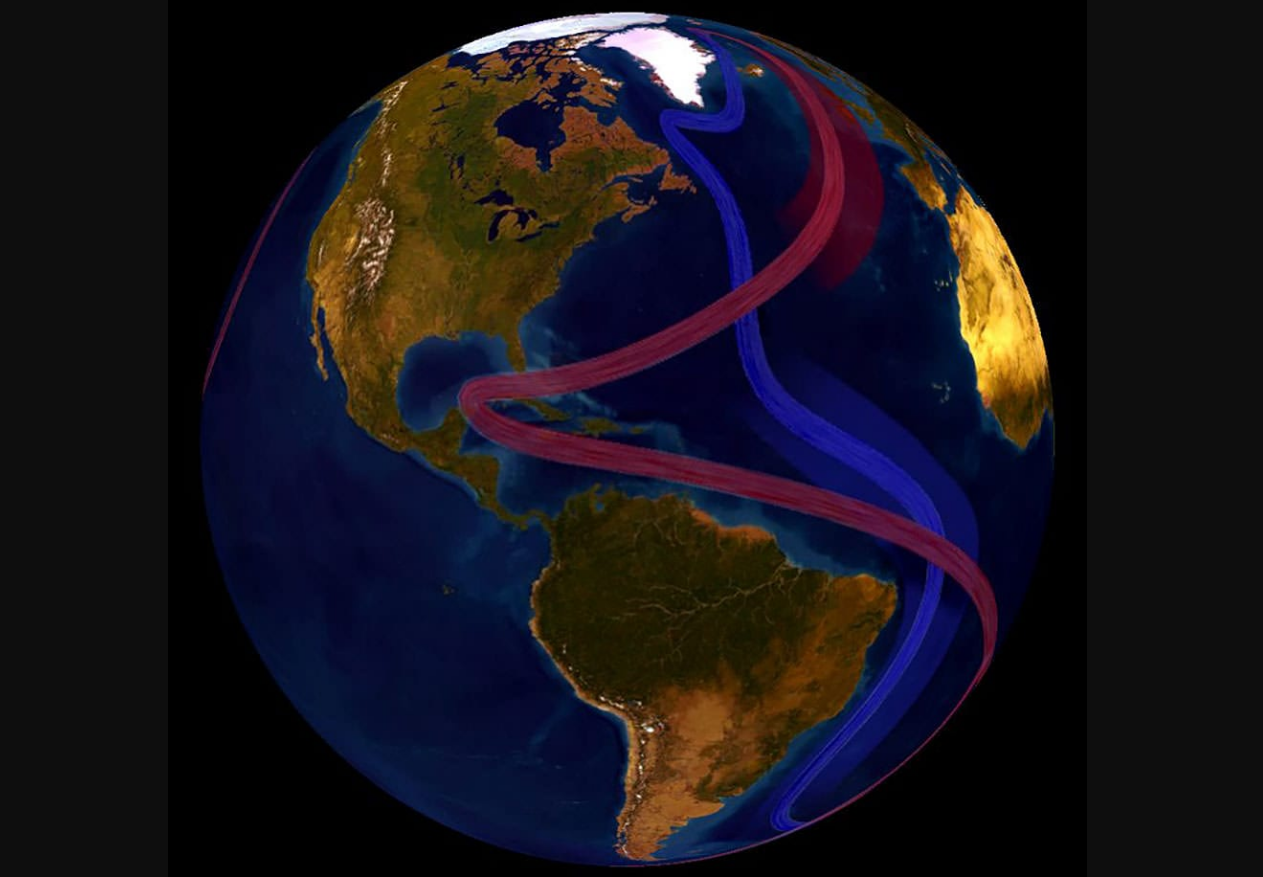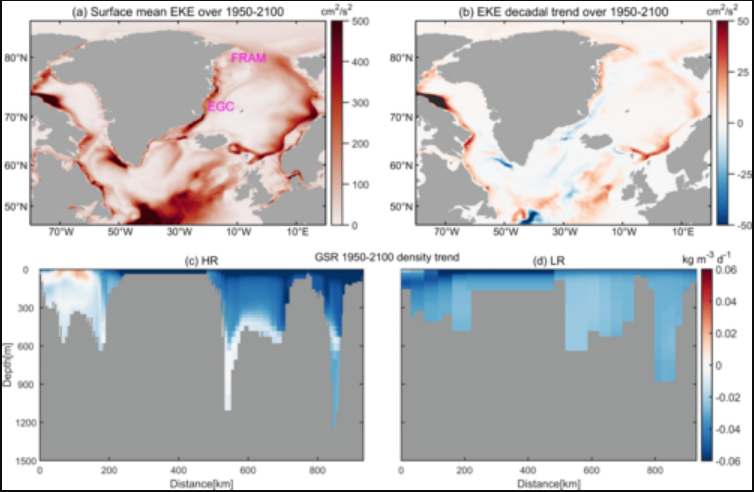Global warming could radically change Europe's climate
 The Atlantic AMOC circulation could leave Europe without heat (photo: Getty Images)
The Atlantic AMOC circulation could leave Europe without heat (photo: Getty Images)
Ocean currents play a crucial role in shaping Earth's weather and climate by transporting massive volumes of water across the planet. Scientists are increasingly concerned about changes in the Atlantic Meridional Overturning Circulation (AMOC), which helps to retain warmth in Northern Europe.
What scientists are concerned about
The warm climate in Northern Europe, despite its geographical location, is maintained by the Atlantic Meridional Overturning Circulation (AMOC). This system of currents in the Atlantic Ocean transports warm water northward, where it cools and sinks to the ocean floor. The well-known Gulf Stream is part of this system, regulating climate by moving warm tropical waters northward and cold waters southward.
AMOC extends roughly from the Gulf of Mexico to the Svalbard archipelago. However, researchers now warn that the Atlantic Meridional Overturning Circulation could face collapse within the coming decades, or possibly even sooner.
According to scientists, the primary Atlantic circulation system may experience new variations and tipping points.
 Circulation of the ocean current system (illustration: oceanservice.noaa.gov)
Circulation of the ocean current system (illustration: oceanservice.noaa.gov)
How global warming affects AMOC
Currently, AMOC transports vast amounts of warm water to the North Atlantic, where it cools, sinks, and dramatically changes direction, flowing near Greenland's eastern coast, across the Atlantic, and further south into the Atlantic Ocean. The heat released during this process keeps Northern European ports ice-free.
However, global warming threatens to significantly alter, if not destroy, AMOC. As climate change progresses, the saline northeastern circulation of AMOC mixes with the increasingly fresh Arctic water (due to melting ice) and increased precipitation.
Freshwater decreases the density and salinity of ocean currents, reducing their cooling and sinking in the North Atlantic, as well as their southward (warm) flow.

Surface eddy kinetic energy and density distribution in the subarctic Atlantic under global warming (infographic: journals.aps.org)
Recent research findings
In 1995, climate modeling experts predicted that AMOC might cease to exist by 2200. Subsequent observations indicated that AMOC is indeed slowing in some areas.
Modern technology enables scientists to use a climate model that examines AMOC in greater detail, including numerous flows, circulations, and inputs. Recent studies provide new data not considered in previous models.
According to Gerrit Lohmann, a co-author on the study from the Alfred Wegener Institute at the Helmholtz Center for Polar and Marine Research at the University of Bremen in Germany, recent modeling of AMOC shows that the circulation sharply drops in some regions while unexpectedly increasing in others.
"Our high-resolution model study uncovers a startling twist: the Atlantic Meridional Overturning Circulation (AMOC) may strengthen in the subarctic Atlantic due to warming," Lohmann said.

AMOC in the context of global warming (infographic: journals.aps.org)
This assertion challenges the previously held belief that this critical current system is constantly weakening.
Using the newly developed high-resolution climate model known as the Community Earth System, Lohmann and his colleagues suggest that the overall slowdown of AMOC (by about 8 million cubic meters of water per second) will continue at least until 2100. However, on a regional scale, AMOC's behavior may be ambiguous.
"Advanced climate models now reveal that under extreme greenhouse gas emissions (RCP 8.5), the AMOC could experience sharp declines in some areas while paradoxically increasing in the Arctic. This unexpected regional strengthening occurs despite an overall weakening trend in AMOC activity," Lohmann explained.
Additionally, the Community Earth System model revealed "tipping points" where the ocean current system abruptly shifts from one state to another due to seemingly minor changes.
For example, similar research on the Greenland ice sheet indicated that its "tipping point" would occur if global temperatures rise about 2.5°C above pre-industrial levels (1850-1900). Reaching this "tipping point" could make the melting of the entire ice cover inevitable.
"The findings highlight the urgent need to incorporate regional dynamics into AMOC forecasts, as these localized shifts could have profound impacts on climate and marine ecosystems. As we face an uncertain climatic future, these insights underscore the critical importance of advancing climate models to anticipate and respond to dramatic changes in our planet's systems," Lohmann noted.
What's more, the feedback between the overall AMOC and small-scale AMOC "could change in the future," he said.
Also, read about why tropical rains might shift northward and which countries could face disaster as a result.
Sources: PHYS.org, Physical Review Letters, NOAA's National Ocean Service, Wikipedia.

